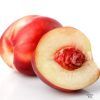Position
Full Sun. At least 6 – 8 hours. This nectarine requires fewer chill hours than most other nectarine tree varieties
Soil
Well-drained loamy soil; prefers slightly acidic to neutral pH (6.0–7.0)
Avoid heavy clay or waterlogged soils.
Watering
Regular watering during fruit development — keep the soil moist but not soggy
Mulching
Add a thick layer of Pine bark mulch, keeping it about 20 to 30 centimetres away from the tree trunk itself (any closer and it may cause excess moisture to damage the trunk). This will retain the moisture in the soil and will prevent weeds from taking over.
Fertilising
Apply 1 teaspoon every 4-5 months of our slow-release all-plant fertiliser. The roots will absorb what they need.
Pruning
Prune in winter (dormant season) to remove dead wood and shape the tree. Typically grows to 3–4 meters tall, but can be pruned to remain compact for smaller gardens or pots.
Train as an open center (vase shape) for good light penetration and air circulation.
Thin fruit when marble-sized — aim for 10–15 cm spacing between fruits for larger, healthier peaches.
Pests and Diseases
Leaf curl (especially in spring), aphids, peach twig borer, and fruit fly. Preferably use preventative measures by spraying with agricultural Neem Oil or Effective Microorganisms (EM Control)
Practice good garden hygiene (remove fallen fruit and leaves)
You can also net the tree to prevent fruit fly and bird damage:
Harvesting
Early Summer months. September / October





